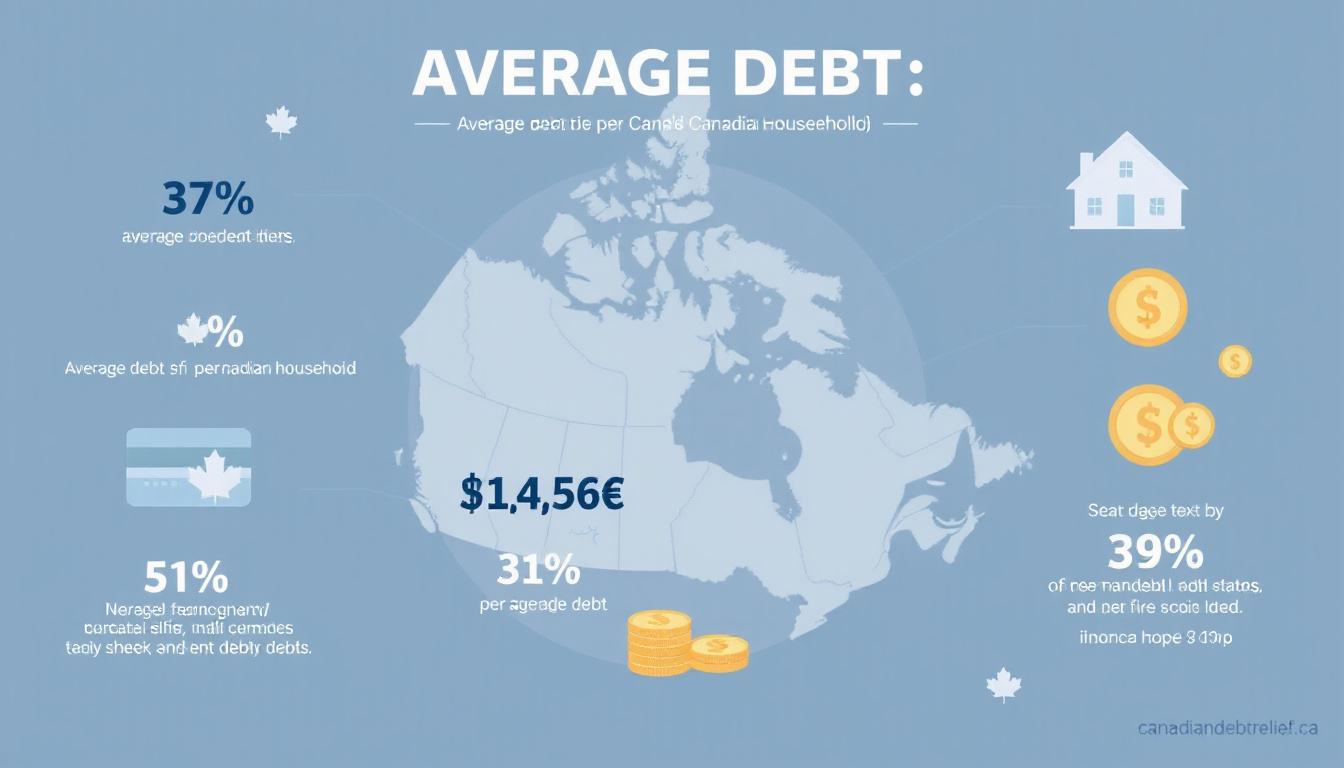As of 2023, the average debt per Canadian household stands at approximately CAD 73,000, highlighting the ongoing financial challenges faced by many families across the nation. This statistic reflects a combination of mortgages, consumer debt, and lines of credit, and underscores the importance of addressing household financial health in Canada. The factors contributing to this debt range from rising housing costs to increased reliance on credit. In addition, there are notable differences in average debt levels across provinces, with some areas experiencing significantly higher burdens than others. Understanding these dynamics is crucial for both policymakers and consumers as they seek to manage and reduce household debt effectively.

Key Takeaways
- The average debt per Canadian household is a critical indicator of financial health in the country.
- Several factors, including rising housing prices and consumer spending, contribute to household debt levels in Canada.
- Debt levels vary significantly across provinces, reflecting regional economic conditions and lifestyles.
- Managing and reducing household debt is essential for financial stability; practical strategies can help individuals achieve this.
- Understanding the complexities of household debt can empower Canadians to make informed financial decisions.
Overview of Canadian Household Debt
As of 2023, the average debt per Canadian household stands at approximately CAD 73,000, according to recent data from Statistics Canada. This figure encompasses various forms of debt, including mortgages, credit cards, and personal loans. The increase in household debt has raised concerns about financial stability as it signifies that many Canadians are living beyond their means. Notably, this average has seen a rise from previous years, reflecting further pressures on Canadian families due to rising costs of living and interest rates. Additional context reveals that around 47% of Canadian households owe more than they have in savings, heightening the urgency for financial literacy and debt relief resources.
Factors Contributing to Household Debt in Canada
As of 2023, the average debt per Canadian household stands at approximately CAD 73,500. This staggering figure encompasses various forms of debt, including mortgages, credit cards, and personal loans, indicating that many Canadians are grappling with significant financial burdens. According to Statistics Canada, nearly 50% of Canadian households reported having some form of debt, which underscores the pervasive nature of this issue. Factors contributing to this high average include rising housing costs, increased reliance on credit, and stagnant wage growth. With inflation consistently impacting purchasing power, the average Canadian household continues to navigate a challenging economic landscape, making debt management more critical than ever.
‘Debt is a trap, a means to an end that can lead to a lifetime of servitude if not managed wisely.’

Comparison of Average Debt Across Provinces
As of 2023, the average debt per Canadian household stands at approximately $73,500, according to data from Statistics Canada. This figure illustrates the growing financial pressures faced by many households, highlighting a significant increase in consumer debt levels. The debt burden varies widely across provinces, with British Columbia reporting one of the highest average debts at around $92,700 per household, while households in Newfoundland and Labrador average about $59,300. Such disparities underline the regional economic differences and consumer behaviors contributing to debt accumulation. Understanding these variations is crucial for policymakers and financial advisors aiming to address household financial health across the nation.
Strategies for Managing and Reducing Household Debt
As of 2023, the average debt per Canadian household stands at approximately $73,500. This staggering figure highlights the growing financial burden faced by many families across the country. According to Statistics Canada, this amount encompasses various types of debt, including mortgages, credit cards, and personal loans. Understanding the scale of this debt is crucial for Canadians looking to manage their finances effectively. In recent years, rising living costs and interest rates have contributed to an increasing reliance on credit, making it essential for households to implement effective debt management strategies. To combat this financial strain, experts recommend creating a budget, prioritizing high-interest debts, and exploring debt relief options. By actively addressing their financial situation, Canadians can work towards reducing their debt and achieving greater financial stability.
